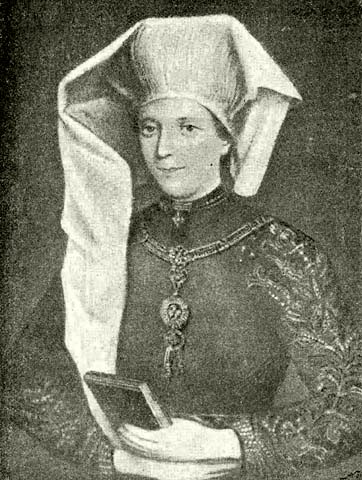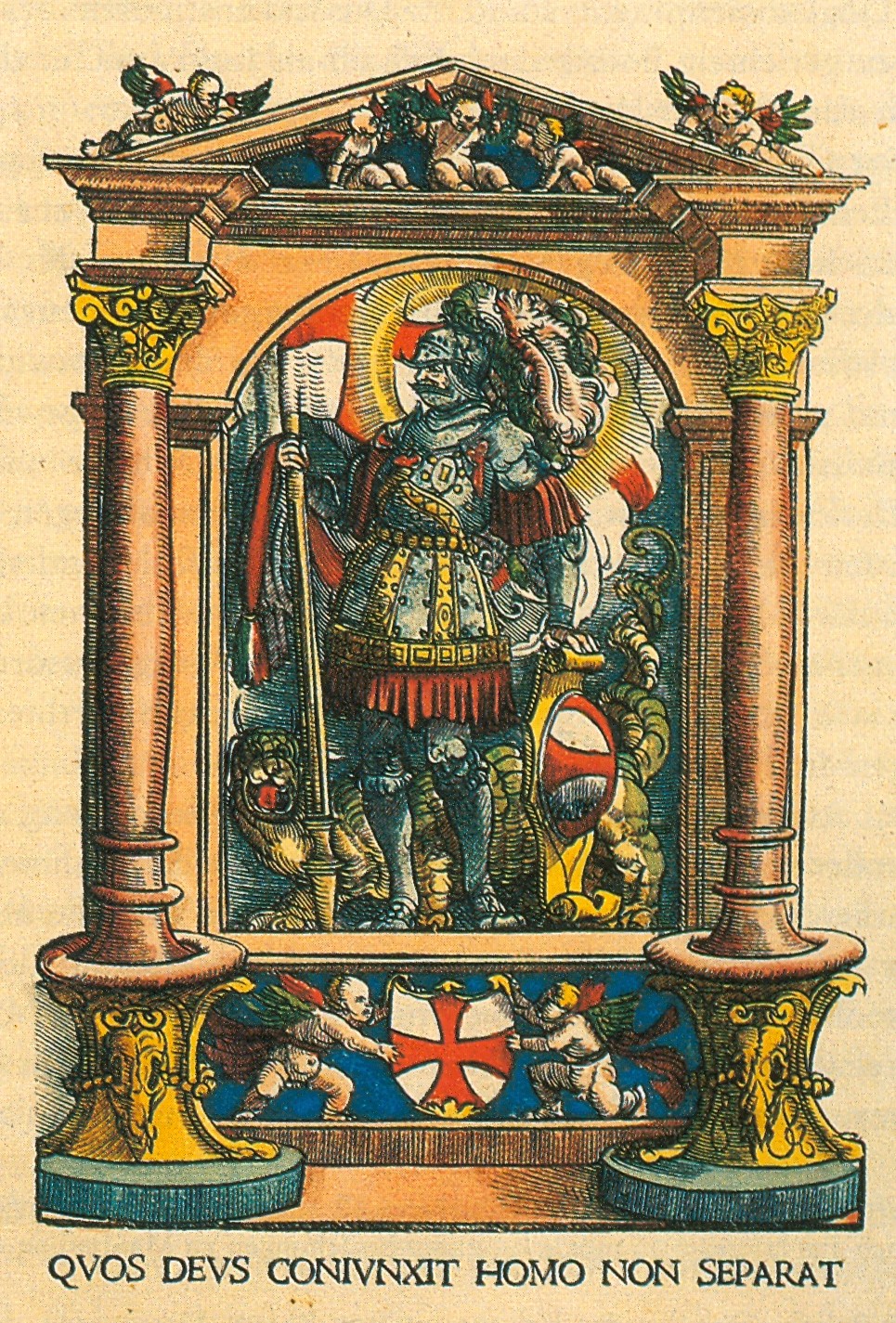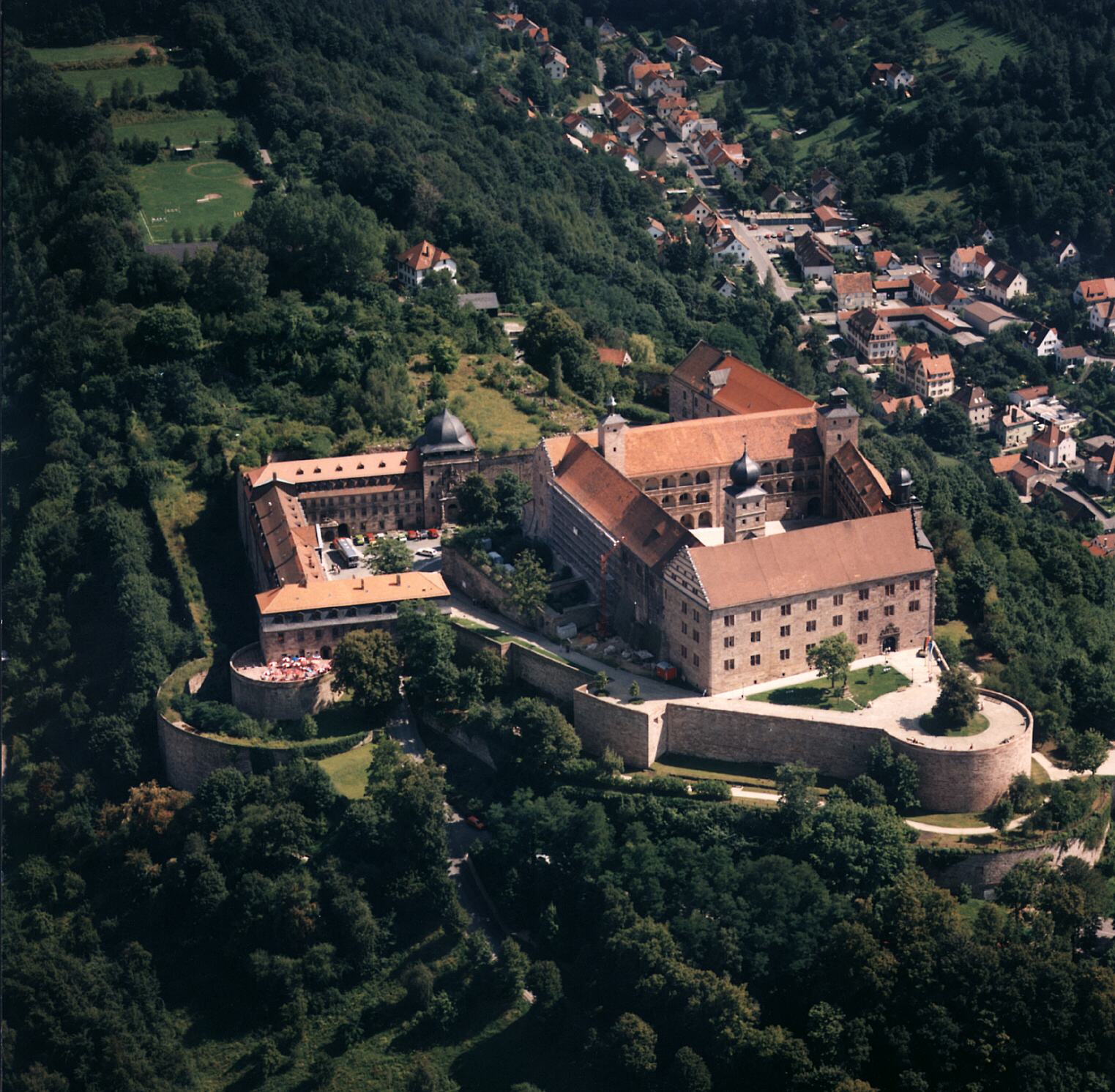|
Casimir, Margrave Of Brandenburg-Bayreuth
Casimir (or Kasimir) of Brandenburg-Bayreuth (27 December 1481 – 21 September 1527) was Margrave of Bayreuth or Margrave of Brandenburg-Kulmbach from 1515 to 1527. Life Family background Casimir was born in Ansbach, as the son of Frederick I, Margrave of Brandenburg-Ansbach and his wife Princess Sofia Jagiellon, a daughter of King Casimir IV Jagiellon of Poland. From 1498, Casimir's father Frederick granted him the position of stadtholder of the margraviate during his extensive travels. He ruled under the guidance of experienced advisors. In 1515, Casimir and his younger brother George deposed their father, who had greatly burdened the finances of the margraviate with his lavish lifestyle. Casimir then locked up his father at his residence at Plassenburg Castle, in a tower room from which his father could not escape for 12 years. He took up the rule of the Margraviate of Brandenburg-Kulmbach while his brother George ruled the Margraviate of Brandenburg-Ansbach. Howeve ... [...More Info...] [...Related Items...] OR: [Wikipedia] [Google] [Baidu] |
Hans Von Kulmbach
Hans Suess, known as Hans von Kulmbach, was a German artist. He was born around 1480 in Kulmbach, Franconia and died prior to 3 December 1522 in Nuremberg.John Denison Champlin, Charles CallahanCyclopedia of Painters and PaintingsNew York, Publisher: Charles Scribner's Sons. Page 414 Hans von Kulmbach was the artist who created the Kraków St John's Altar. Life Kulmbach probably arrived in Nuremberg around 1505. He received instruction by Jacopo de' Barbari, who for a time worked in Nuremberg. Von Kulmbach then apprenticed with Albrecht Dürer and after Dürer retired from painting altarpieces in 1510 Kulmbach took over most of his commissions. Kulmbach had his own workshop in Nuremberg and at times worked in Kraków. He also created artworks for emperor Maximilian I and for Margrave Casimir Hohenzollern von Brandenburg-Kulmbach. His best works were stained-glass windows in churches, such as the Maximilian stained-glass, Margrave stained-glass at St. Sebald in Nuremberg, the ... [...More Info...] [...Related Items...] OR: [Wikipedia] [Google] [Baidu] |
George, Margrave Of Brandenburg-Ansbach
George of Brandenburg-Ansbach (German: ''Georg''; 4 March 1484 – 27 December 1543), known as George the Pious (''Georg der Fromme''), was a Margrave of Brandenburg-Ansbach from the House of Hohenzollern. Biography Early life He was born in Ansbach, the second of eight sons of Margrave Frederick the Elder and his wife Sophia of Poland, daughter of Casimir IV of Poland and Elisabeth of Habsburg. Through his mother, he was related to the royal court in Buda. He entered the service of his uncle, King Vladislaus II of Bohemia and Hungary, living at his court from 1506. The king received him as an adopted son, entrusted him in 1515 with the Duchy of Oppeln, and in 1516 made him member of the tutelary government instituted for Hungary, and tutor of his son Louis II of Hungary and Bohemia. In 1521 he made an arrangement with Petar Keglević and pulled back from Hungary and Croatia; this arrangement, accepted by Louis II in 1526, was not accepted by Holy Roman Emperor F ... [...More Info...] [...Related Items...] OR: [Wikipedia] [Google] [Baidu] |
Swabian League
The Swabian League (''Schwäbischer Bund'') was a mutual defence and peace keeping association of Imperial Estates – free Imperial cities, prelates, principalities and knights – principally in the territory of the early medieval stem duchy of Swabia established on 14 February 1488. The religious revolution of the Protestant Reformation divided its members, and the Swabian League disbanded in 1534. History The Swabian League was established in 1488 at the behest of Emperor Frederick III of Habsburg and supported as well by Bertold von Henneberg-Römhild, archbishop of Mainz, whose conciliar rather than monarchic view of the ''Reich'' often put him at odds with Frederick's successor Maximilian. The Swabian League cooperated towards the keeping of the imperial peace and at least in the beginning curbing the expansionist Bavarian dukes from the House of Wittelsbach and the revolutionary threat from the south in the form of the Swiss. The League held regular meetings, supported ... [...More Info...] [...Related Items...] OR: [Wikipedia] [Google] [Baidu] |
Baden
Baden (; ) is a historical territory in South Germany, in earlier times on both sides of the Upper Rhine but since the Napoleonic Wars only East of the Rhine. History The margraves of Baden originated from the House of Zähringen. Baden is named after the margraves' residence, in Baden-Baden. Hermann II of Baden first claimed the title of Margrave of Baden in 1112. A united Margraviate of Baden existed from this time until 1535, when it was split into the two Margraviates of Baden-Durlach and Baden-Baden. Following a devastating fire in Baden-Baden in 1689, the capital was moved to Rastatt. The two parts were reunited in 1771 under Margrave Charles Frederick. The restored Margraviate with its capital Karlsruhe was elevated to the status of electorate in 1803. In 1806, the Electorate of Baden, receiving territorial additions, became the Grand Duchy of Baden. The Grand Duchy of Baden was a state within the German Confederation until 1866 and the German Empire u ... [...More Info...] [...Related Items...] OR: [Wikipedia] [Google] [Baidu] |
Christopher I, Margrave Of Baden
Christopher I of Baden (13 November 1453 – 19 April 1527) was the Margrave of Baden from 1475 to 1515. Life Christopher was the eldest son of Charles I, Margrave of Baden-Baden and Catherine of Austria, a sister of Frederick III, Holy Roman Emperor. He regained the territories that were lost by his father to the Palatinate and its allies. Christopher maneuvered to keep these territories united under his son and successor Philip I, but his efforts were thwarted by Louis XII of France. In 1479, the seat of the Margraviate of Baden was moved from Hohenbaden Castle to New Castle (') of Baden-Baden which was built by him. In 1489 Christopher became a member of the Swabian League. This was part of his efforts for peaceful coexistence with his neighbors (in particular with Württemberg and the cities of Weil and Strasbourg). Within the protection of this South West German pact, Christopher advanced the internal development of his dominion. Christopher's winegrowing law of 1495 ... [...More Info...] [...Related Items...] OR: [Wikipedia] [Google] [Baidu] |
Margrave
Margrave was originally the medieval title for the military commander assigned to maintain the defence of one of the border provinces of the Holy Roman Empire or of a kingdom. That position became hereditary in certain feudal families in the Empire and the title came to be borne by rulers of some Imperial principalities until the abolition of the Empire in 1806 (e.g., Margrave of Brandenburg, Margrave of Baden). Thereafter, those domains (originally known as ''marks'' or ''marches'', later as ''margraviates'' or ''margravates'') were absorbed in larger realms or the titleholders adopted titles indicative of full sovereignty. History Etymologically, the word "margrave" ( la, marchio, links=no, ) is the English and French form of the German noble title (, meaning " march" or "mark", that is, border land, added to , meaning "Count"); it is related semantically to the English title " Marcher Lord". As a noun and hereditary title, "margrave" was common among the languages of ... [...More Info...] [...Related Items...] OR: [Wikipedia] [Google] [Baidu] |
Maximilian I, Holy Roman Emperor
Maximilian I (22 March 1459 – 12 January 1519) was King of the Romans from 1486 and Holy Roman Emperor from 1508 until his death. He was never crowned by the pope, as the journey to Rome was blocked by the Venetians. He proclaimed himself Elected Emperor in 1508 ( Pope Julius II later recognized this) at Trent, thus breaking the long tradition of requiring a Papal coronation for the adoption of the Imperial title. Maximilian was the son of Frederick III, Holy Roman Emperor, and Eleanor of Portugal. Since his coronation as King of the Romans in 1486, he ran a double government, or ''Doppelregierung'' (with a separate court), with his father until Frederick's death in 1493. Maximilian expanded the influence of the House of Habsburg through war and his marriage in 1477 to Mary of Burgundy, the ruler of the Burgundian State, heir of Charles the Bold, though he also lost his family's original lands in today's Switzerland to the Swiss Confederacy. Through marriage of his son ... [...More Info...] [...Related Items...] OR: [Wikipedia] [Google] [Baidu] |
Vassal
A vassal or liege subject is a person regarded as having a mutual obligation to a lord or monarch, in the context of the feudal system in medieval Europe. While the subordinate party is called a vassal, the dominant party is called a suzerain. While the rights and obligations of a vassal are called vassalage, and the rights and obligations of a suzerain are called suzerainty. The obligations of a vassal often included military support by knights in exchange for certain privileges, usually including land held as a tenant or fief. The term is also applied to similar arrangements in other feudal societies. In contrast, fealty (''fidelitas'') was sworn, unconditional loyalty to a monarch. European vassalage In fully developed vassalage, the lord and the vassal would take part in a commendation ceremony composed of two parts, the homage and the fealty, including the use of Christian sacraments to show its sacred importance. According to Eginhard's brief description, the '' ... [...More Info...] [...Related Items...] OR: [Wikipedia] [Google] [Baidu] |
Charles V, Holy Roman Emperor
Charles V, french: Charles Quint, it, Carlo V, nl, Karel V, ca, Carles V, la, Carolus V (24 February 1500 – 21 September 1558) was Holy Roman Emperor and Archduke of Austria from 1519 to 1556, King of Spain ( Castile and Aragon) from 1516 to 1556, and Lord of the Netherlands as titular Duke of Burgundy from 1506 to 1555. He was heir to and then head of the rising House of Habsburg during the first half of the 16th century, his dominions in Europe included the Holy Roman Empire, extending from Germany to northern Italy with direct rule over the Austrian hereditary lands and the Burgundian Low Countries, and Spain with its southern Italian possessions of Naples, Sicily, and Sardinia. He oversaw both the continuation of the long-lasting Spanish colonization of the Americas and the short-lived German colonization of the Americas. The personal union of the European and American territories of Charles V was the first collection of realms labelled " the empire ... [...More Info...] [...Related Items...] OR: [Wikipedia] [Google] [Baidu] |
Albert Of Brandenburg
Cardinal Albert of Brandenburg (german: Albrecht von Brandenburg; 28 June 149024 September 1545) was a German cardinal, elector, Archbishop of Mainz from 1514 to 1545, and Archbishop of Magdeburg from 1513 to 1545. Biography Early career Born in Cölln on the Spree, Albert was the younger son of John Cicero, Elector of Brandenburg and Margaret of Thuringia. After their father's funeral, Albert and his older brother Joachim I Nestor became margraves of Brandenburg in 1499, but only his older brother held the title of an elector of Brandenburg. Albert studied at the university of Frankfurt (Oder), and in 1513 became Archbishop of Magdeburg at the age of 23 and administrator of the Diocese of Halberstadt. Endnote: See *J. H. Hennes, ''Albrecht von Brandenburg, Erzbischof von Mainz und Magdeburg'' (Mainz, 1858) *J. May, ''Der Kurfürst, Kardinal, und Erzbischof Albrecht II. von Mainz und Magdeburg'' (Munich, 1865–1875) *W. Schum, ''Kardinal Albrecht von Mainz und die Erf ... [...More Info...] [...Related Items...] OR: [Wikipedia] [Google] [Baidu] |
Augsburg
Augsburg (; bar , Augschburg , links=https://en.wikipedia.org/wiki/Swabian_German , label=Swabian German, , ) is a city in Swabia, Bavaria, Germany, around west of Bavarian capital Munich. It is a university town and regional seat of the ''Regierungsbezirk'' Schwaben with an impressive Altstadt (historical city centre). Augsburg is an urban district and home to the institutions of the Landkreis Augsburg. It is the third-largest city in Bavaria (after Munich and Nuremberg) with a population of 300,000 inhabitants, with 885,000 in its metropolitan area. After Neuss, Trier, Cologne and Xanten, Augsburg is one of Germany's oldest cities, founded in 15 BC by the Romans as Augusta Vindelicorum, named after the Roman emperor Augustus. It was a Free Imperial City from 1276 to 1803 and the home of the patrician Fugger and Welser families that dominated European banking in the 16th century. According to Behringer, in the sixteenth century, it became "the dominant centre of early cap ... [...More Info...] [...Related Items...] OR: [Wikipedia] [Google] [Baidu] |
Kulmbach
Kulmbach () is the capital of the district of Kulmbach in Bavaria in Germany. The town is famous for Plassenburg Castle, which houses the largest tin soldier museum in the world, and for its sausages, or ''Bratwürste''. Geography Location Kulmbach is located in the middle of the Bavarian province of Upper Franconia, about northwest of the city of Bayreuth. To the south of Kulmbach, the River Main begins at the confluence of its headstreams, the White Main and Red Main. Town districts Kulmbach is divided into the following districts (with population in brackets): History From about 900 AD there was a small settlement in what is now the district of Spiegel, which consisted of a forest lodge and a fortified tenant farm (''Fronhof'') to protect the river Main crossing at Grünwehr. The area later passed into the hands of the Count of Schweinfurt, whose power was usually exercised through the office of the . Kulmbach was first mentioned as ''Kulma'' in a deed of ... [...More Info...] [...Related Items...] OR: [Wikipedia] [Google] [Baidu] |







